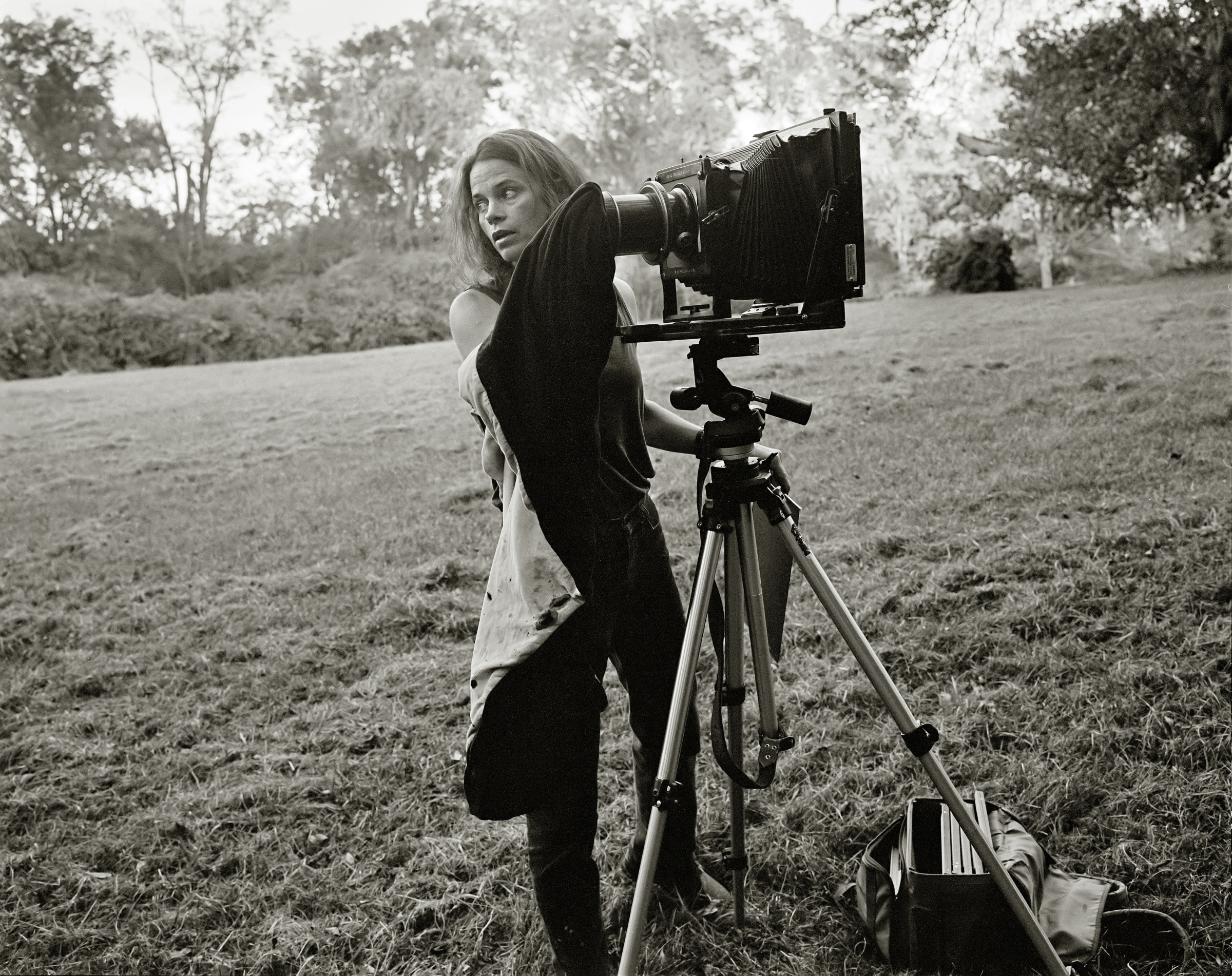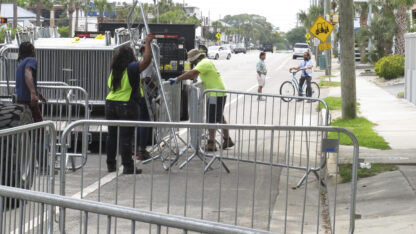Photographer Sally Mann Explores The South’s Complicated History In High Museum Exhibit

Sally Mann photographing subjects on her farm in Virginia.
R. Kim Rushing
Photographer Sally Mann has never shied away from depicting a raw portrait of the South. She portrays the beauty and battlegrounds below the Mason-Dixon Line. Mann is also known for intimate photographs of her children on her Lexington, Virginia, farm. The exhibition “Sally Mann: A Thousand Crossings,” is on view now at the High Museum.
“The exhibition is a look at 40 years of Sally Mann’s career through the lens of her relationship to the South. It looks at how she’s explored the South and interrogated it, and how the South has both shaped the person she is, but also the art she creates,” curator Sarah Kennel said.
Once visitors enter the first floor of the exhibit, they are greeted with two floor-to-ceiling enlarged portraits. One photograph is of her family floating down a river in a canoe in Lexington. Parallel to that photograph is one that Mann didn’t print until this exhibition. It’s of her husband, turned away from the camera, burning the grass on their farm to turn over the land for the next season of growth.
The photographs have been compiled into groups on each floor and section of the exhibit. She mostly photographs with a large-format camera in black-and-white, but a few photos are in color. Her young children were the main source of her photography for most of her career in the ’90s, before she turned toward capturing the surrounding landscapes.
Even though Mann was named “America’s Best Photographer” by Time magazine, her artwork has also stirred up some controversy — mostly because of the way she has photographed her children — often posed nude outside.
“When these photographs were published in 1992, it was in the midst of the cultural wars. There was a lot of anxiety around nudity and obscenity in the arts, but we also have to remember that these were published long before the internet existed,” Kennel said. “When Mann first published the photographs, she wasn’t a particularly well-known photographer. The initial print run was likely only 1,500 copies. So, the anxieties we have now over the uncontrolled circulation of images really wasn’t relevant then.
“She did, however, consult with her children and with a psychologist before showing those pictures and having them printed. The children were really adamantly for the publication of the photographs.”
In the early 2000s, Mann began looking at the parallels between life and death in her fifth book, “What Remains.” That book of photographs became the center of a feature film about Mann’s life and her work, and it was nominated for an Emmy in 2008.
At the top level of the exhibit, Mann examines her relationship with her beloved “Gee-gee.” Virginia Carter, aka “Gee-gee,” was Mann’s childhood caregiver. Looking back at this relationship as an adult, Mann struggled with what she called the “fundamental paradox of the South.”
“Of course Gee-gee was a part of Mann’s family, but she also had her own family. [Gee-gee’s] life was structured by segregation and racism in a way that Mann’s own family wasn’t,” Kennel said. “Part of the exhibition is about Sally coming to terms with this and trying to reconcile how they could have loved so much this caretaker, and also been so blind in many ways to the deep divisions.”
“Sally Mann: A Thousand Crossings” will be on view at the High Museum through Feb. 2.











